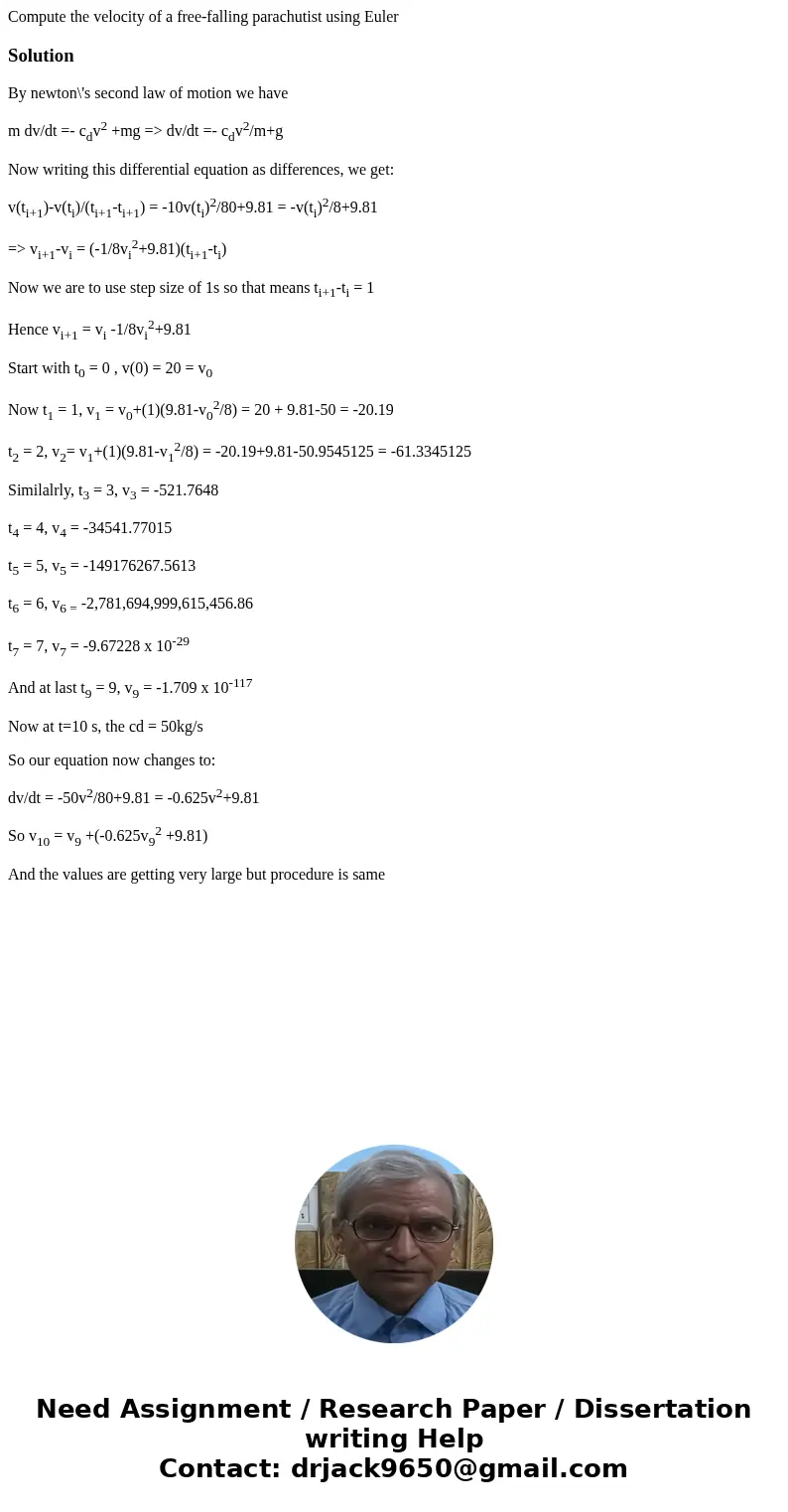Compute the velocity of a freefalling parachutist using Eule
Compute the velocity of a free-falling parachutist using Euler
Solution
By newton\'s second law of motion we have
m dv/dt =- cdv2 +mg => dv/dt =- cdv2/m+g
Now writing this differential equation as differences, we get:
v(ti+1)-v(ti)/(ti+1-ti+1) = -10v(ti)2/80+9.81 = -v(ti)2/8+9.81
=> vi+1-vi = (-1/8vi2+9.81)(ti+1-ti)
Now we are to use step size of 1s so that means ti+1-ti = 1
Hence vi+1 = vi -1/8vi2+9.81
Start with t0 = 0 , v(0) = 20 = v0
Now t1 = 1, v1 = v0+(1)(9.81-v02/8) = 20 + 9.81-50 = -20.19
t2 = 2, v2= v1+(1)(9.81-v12/8) = -20.19+9.81-50.9545125 = -61.3345125
Similalrly, t3 = 3, v3 = -521.7648
t4 = 4, v4 = -34541.77015
t5 = 5, v5 = -149176267.5613
t6 = 6, v6 = -2,781,694,999,615,456.86
t7 = 7, v7 = -9.67228 x 10-29
And at last t9 = 9, v9 = -1.709 x 10-117
Now at t=10 s, the cd = 50kg/s
So our equation now changes to:
dv/dt = -50v2/80+9.81 = -0.625v2+9.81
So v10 = v9 +(-0.625v92 +9.81)
And the values are getting very large but procedure is same

 Homework Sourse
Homework Sourse